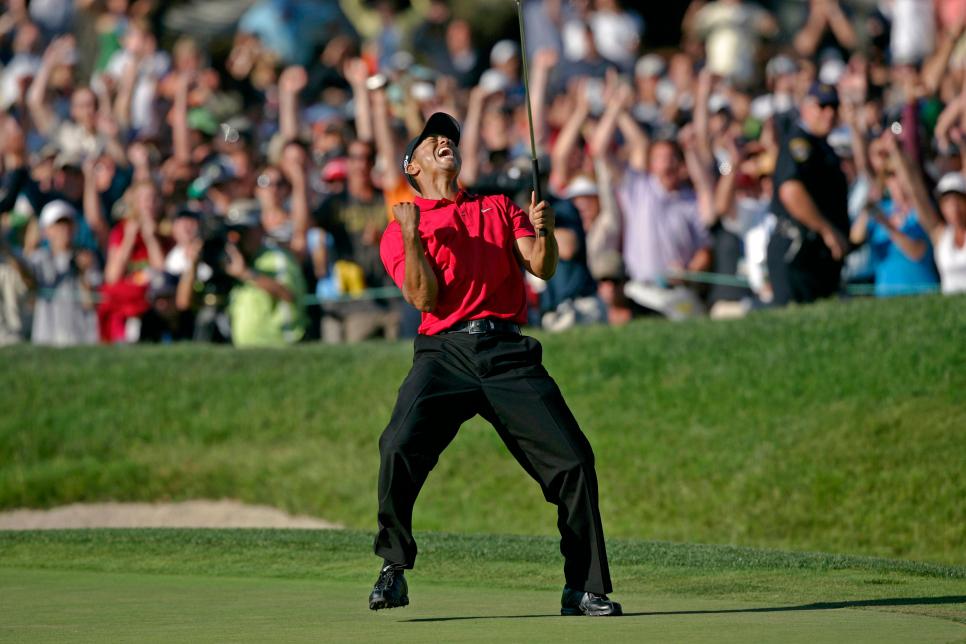Bonus Golf
U.S. Open playoff 2024: The format, rules and holes played at Pinehurst

Tiger Woods made this birdie putt on the 18th hole Sunday at Torrey Pines in 2008 to force the last playoff in U.S. Open history.
Los Angeles Times via Getty Images
PINEHURST, N.C. — Not since 2008, when Tiger Woods outlasted Rocco Mediate in overtime at Torrey Pines, has the U.S. Open needed more than 72 holes to decide a champion. The 16-year gap is the longest period in U.S. Open history in which a playoff has not been needed to determine a champion.
In other words, we might just be due.
Mind you, how the USGA conducts a playoff at the U.S. Open—there have been 33 in the previous 123 playings of the event—has changed since Woods needed 19 extra holes to beat Mediate. In 2018, the governing body finally decided to do away with using an 18-hole playoff in the event of a tie in regulation. Instead, a two-hole aggregate is now used. If two or more players are tied at the end of regulation Sunday at Pinehurst No. 2, they will then replay the 17th and 18th holes, with the player with the lower score declared the winner. If there’s still a tie, the players then play sudden death, rotating still between the 17th and 18th holes, until someone emerges victorious.
Traditionalists were no doubt disappointed when the USGA changed from its old playoff format. Part of the U.S. Open’s reputation as golf’s most arduous test has come from the extreme manner in which the USGA would determine a winner in the event of a tie.
In fact, from 1928 to 1931, the USGA didn’t just play one extra round after a tie, but two, employing a 36-hole playoff format at the U.S. Open. In 1931, when Billy Burke and George Von Elm remained tied after the playoff, they played another 36-hole playoff. Burke eventually won the title—by one shot—after playing 144 holes.
Shortly after, the USGA eased up on its rigidness, reducing playoffs back to 18 holes, which still made it an outlier in that by the 1980s every other major championship used something still shorter.
“We know how important it is to everyone in the golf world to see play conclude on the Sunday of a major championship, and to award the trophy to the champion,” said Mike Davis, then CEO of the USGA, when the change to the two-hole aggregate was announced. “After receiving input from a variety of constituents, including players, fans, volunteers, officials and our broadcast partners, it clearly came across as something that everyone valued, and would benefit from.”
Interestingly, none of the four major championships have the same playoff format in place. The PGA Championship uses a three-hole aggregate, while the Open Championship goes with four holes. The Masters is the only major that uses a pure sudden-death format, the same as the PGA Tour.
• • •